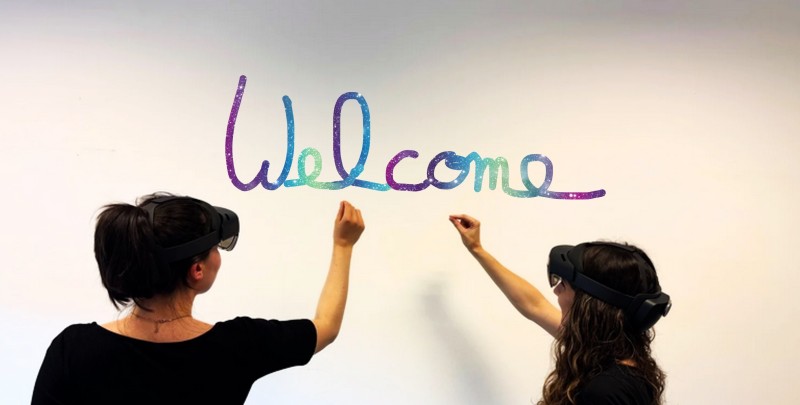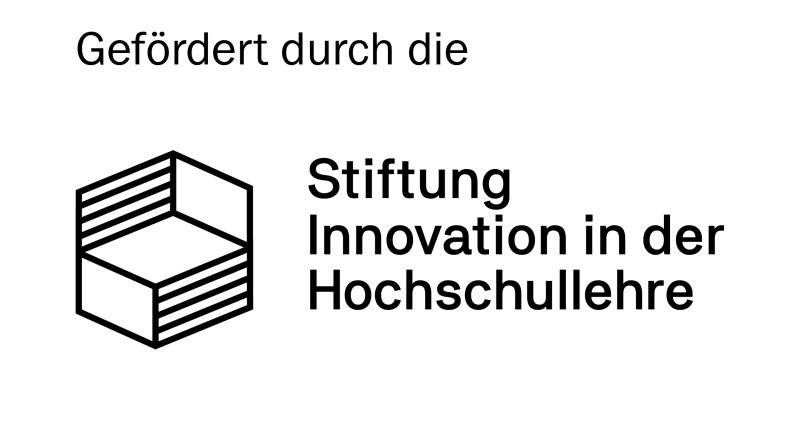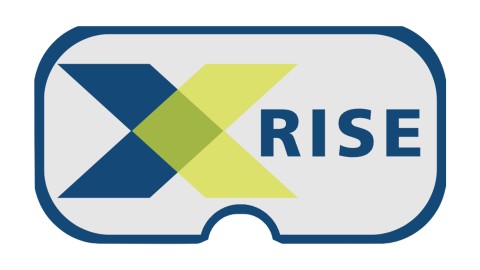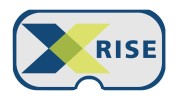Welcome / Willkommen!

The teaching project XRISE employs the translanguaging approach. Find the German version below. / Das Projekt XRISE verfolgt den Translanguaging-Ansatz zur produktiven Nutzung von Mehrsprachigkeit. Die Deutsche Version befindet sich jeweils unter der Englischen.
Project XRISE / Das Projekt XRISE: EXtending Reality in Interdisciplinary CourSEs
Despite its increasing popularity, XR is rarely used in education. Teachers lack the necessary expertise in dealing with XR and there is a lack of scientifically sound, curricularly applicable and technically tested XR learning environments (Abeywardena, 2023).
In addition, XR competences require the interlinking of learning psychology, didactic and technological expertise - in other words, interdisciplinary cooperation, which in this form represents a novelty in the teaching context of Saarland University (UdS).
XRISE is the first pilot project to test and establish meaningful, sustainable and interdisciplinary teaching and learning at the UdS.
As part of the project, an innovative, practical and co-creative seminar series consisting of three consecutive courses is to be realised. Students will acquire an integrative understanding of XR and skills for critically reflecting on, analysing, using and designing the use of XR in teaching and learning situations. A further focus is placed on the scientific evaluation of the practical use of XR applications and thus the transfer of skills to educational practice.
The interdisciplinarity required to develop XR skills is represented at the UdS by the Teacher Training (L), Psychology (P) and Educational Technology (ET) degree programmes. The focus is on the productive integration of individual competences of the heterogeneous student body.
Accompanying evaluation and monitoring measures also ensure that the project progresses as planned, that the effectiveness of the courses is checked and that the seminar content is tailored to the needs of the students.
----------
Trotz zunehmender Verbreitung wird XR im Bildungsbereich selten eingesetzt. Lehrpersonen fehlt die nötige Kompetenz im Umgang mit XR und es fehlen wissenschaftlich fundierte, curricular einsetzbare und technisch erprobte XR-Lernumgebungen (Abeywardena, 2023).
Zudem bedürfen XR-Kompetenzen einer Verzahnung lernpsychologischer, didaktischer und technologischer Expertisen – also einer interdisziplinären Zusammenarbeit, die in dieser Form ein Novum im Lehrkontext der Universität des Saarlandes (UdS) darstellt.
XRISE fungiert als erstes Modellprojekt zur Erprobung und Etablierung sinnhaften, nachhaltigen und interdisziplinären Lehrens und Lernens an der UdS.
Im Rahmen des Projektes soll eine innovative, praxisnahe und ko-kreative Seminarreihe bestehend aus drei aufeinander aufbauenden Veranstaltungen realisiert werden. Die Studierenden erwerben dabei ein integratives XR-Verständnis und Kompetenzen zur kritischen Reflexion, Analyse, Nutzung und Gestaltung des Einsatzes von XR in Lehr-Lernsituationen. Ein weiterer Schwerpunkt wird auf die wissenschaftliche Evaluation des praktischen Einsatzes von XR-Anwendungen und somit die Vermittlung von Transferkompetenzen auf die Bildungspraxis gelegt.
Die benötigte Interdisziplinarität zum Aufbau von XR-Kompetenzen wird an der UdS durch die Studiengänge Lehramt (L), Psychologie (P) und Educational Technology (ET) abgebildet. Dabei steht die produktive Verzahnung individueller Kompetenzen der Expertise-heterogenen Studierendenschaft im Fokus. Begleitende Evaluations- und Monitoring-Maßnahmen stellen zudem den planmäßige Projektfortschritt, die Wirksamkeitsüberprüfung der Lehrveranstaltungen sowie die Passung der Seminarinhalte zu den Bedürfnissen der Studierenden sicher.
Courses for University Students / Lehrveranstaltungen für Studierende
In the upcoming wintersemester 2025/26, university students can dive into "Learning in Extended Reality (XR)" (LSF-Link).
The course ‘Learning in Extended Reality (XR)’ can be attended as part of various degree programmes (see LSF):
- in the compulsory elective area of educational sciences for teacher training programmes
- in the Master's programme in Educational Technology
- in the Bachelor's and Master's programme in Media Informatics
- in the certificate programme Digitality.AI.Society
‘Learning in Extended Reality (XR)’ can also be attended as part of the Transform4Europe Bachelor Tracks Programme (Metacampus-Link).
For students of primary school teaching, there is the adaptation ‘Learning in Extended Reality in Science and Social Studies’ (LSF-Link). This couse is also recognised for the certificate programme MoDiSaar as part of the field of application: natural sciences (LSF-Link).
----------
Im kommenden Wintersemester 2025/26 können Studierende eintauchen in "Lernen in Extended Reality (XR)" (LSF-Link).
Die Lehrveranstaltung "Learning in Extended Reality (XR)" kann im Rahmen verschiedener Studiengänge belegt werden (siehe LSF):
- im Wahlpflichtbereich Bildungswissenschaften für die Lehramstsstudiengänge
- im Masterstudiengang Educational Technology
- im Bachelor- und Masterstudiengang Medieninformatik
- im Zertifikat Digitalität.KI.Gesellschaft
"Learning in Extended Reality (XR)" kann auch im Rahmen der Transform4Europe Bachelor Tracks belegt werden (Metacampus-Link).
Für Studierende des Lehramts Primarstufe gibt es die Adaption "Lernen in Extended Reality im Sachunterricht" (LSF-Link). Diese Veranstaltung kann auch im Rahmen des Zertifkats MoDiSaar in den Anwendungsbereich Naturwissenschaften eingebracht werden (LSF-Link).
Contact information / Kontakt
Kristin Altmeyer, Dr. Luisa Lauer
Appearances and Contributions / Auftritte und Beiträge
- Vortrag "Interdisziplinäre Seminarreihe zur Anbahnung XR-bezogener Kompetenzen" im Rahmen der Tagung der Gesellschaft für Fachdidaktik (GFD) im September 2025.
- Vortrag "Extending Reality in Interdisciplinary Courses: Konzeption einer innovativen und interdisziplinären XR-Seminarreihe" im Rahmen des XR-Learning Workshops der DEFLI Tagung 2025 mit zugehöriger Publikation in den Proceedings der DEFLI Tagung 2025.
What is XR? / Was ist XR?
„Frontier technologies including artificial intelligence, the Internet of Things, and virtual reality are already changing how we work, learn and communicate” (OECD, 2025)
Extended reality (XR) is an expression of profound changes in the course of so-called frontier technologies - i.e. technologies at the forefront of technological progress that are transforming key areas of society such as work, education and communication in a sustainable and radical way. Digitality no longer exists as a separate area of physical reality, but is increasingly becoming a part of it (OECD, 2019).
XR can initially be defined as a generic term for technology-based worlds of experience that are characterised, among other things, by the enrichment of additional technological extensions (Zinn & Ariali, 2020). As a superstructure, XR not only includes virtual reality (VR), augmented reality (AR) and mixed reality (MR), but also describes a fusion of real and virtual world systems triggered by immersive technologies (Zinn & Ariali, 2020). This fusion harbours diverse potential, particularly with regard to learning-relevant advantages (Alnagrat et al., 2022).
XR is multidimensional, multisensory, multimodal and multidisciplinary. It goes beyond the in-teractive, multimedia “reality” for the human five senses by including additional senses, human actions and actuators (Mann, 2018). This is why XR is also referred to as ‘cross reality’ or ‘multimedia reality’ (Zinn & Ariali, 2019; Mann, 2018).
----------
Extended Reality (XR) ist ein Ausdruck tiefgreifender Veränderungen im Zuge der sogenannten frontier technologies – also Technologien an der Spitze des technischen Fortschritts, die gesellschaftliche Schlüsselbereiche wie Arbeit, Bildung und Kommunikation, nachhaltig und radikal transformieren. Digitalität existiert nicht (mehr) als abgegrenzter Bereich der physischen Realität, sondern wird immer mehr ein Teil davon (OECD, 2019).
XR kann dabei zunächst als Oberbegriff für technologiebasierte Erfahrungswelten definiert werden, die u.a. durch die Anreicherung zusätzlicher technologischer Erweiterungen geprägt sind (Zinn & Ariali, 2020). Als eine Superstruktur umfasst XR nicht nur Virtual Reality (VR), Augmented Reality (AR) und Mixed Reality (MR), sondern beschreibt eine durch immersive Technologien ausgelöste Verschmelzung realer und virtueller Weltsysteme (Zinn & Ariali, 2020). Diese Verschmelzung birgt vielfältige Potenziale, insbesondere im Hinblick auf lernrelevante Vorteile (Alnagrat et al., 2022). XR ist multidimensional, multisensorisch, multimodal und multidisziplinär. Es geht über die interaktive, multimediale ‚Realität‘ für die menschlichen fünf Sinne hinaus, indem es zusätzliche Sinne, menschliche Handlungen und Aktoren inkludiert (Mann, 2018). Daher wird XR auch als „Cross Reality“ oder „Multimediated Reality“ bezeichnet (Zinn & Ariali, 2019; Mann, 2018).

Funding / Förderung
The project XRISE is funded by the Stiftung Innovation in der Hochschullehre (StIL) as part of the ‚Freiraum 2025‘ funding programme.
Das Projekt XRISE wird von der Stiftung Innovation in der Hochschullehre (StIL) im Rahmen der Förderlinie „Freiraum 2025“ finanziert.

References / Literatur
Abeywardena, I. S. (2023). OXREF: Open XR for Education Framework. The International Review of Research in Open and Distributed Learning, 24(3), 185–206. https://doi.org/10.19173/irrodl.v24i3.7109
Alnagrat, A., Che Ismail, R., Syed Idrus, S. Z., & Abdulhafith Alfaqi, R. M. (2022). A Review of Extended Reality (XR) Technologies in the Future of Human Education: Current Trend and Future Opportunity. Journal of Human Centered Technology, 1(2), 81–96. https://doi.org/10.11113/humentech.v1n2.27
Mann, S., Furness, T., Yuan, Y., Iorio, J., & Wang, Z. (2018). All Reality: Virtual, Augmented, Mixed (X), Mediated (X,Y), and Multimediated Reality (arXiv:1804.08386). arXiv. https://arxiv.org/abs/1804.08386
OECD. (2025). Trends shaping education 2025. OECD Publishing. https://www.oecd.org/en/publications/trends-shaping-education-2025_ee6587fd-en.html
OECD. (2019). Trends shaping education 2019. OECD Publishing. https://www.oecd.org/en/publications/trends-shaping-education-2019_trends_edu-2019-en.html
Zinn, B., & Ariali, S. (2020). Technologiebasierte Erfahrungswelten. Lehren und Lernen zwischen Virtualität und Realität. In B. Zinn (Hrsg.), Virtual, Augmented und Cross Reality in Praxis und Forschung: Technologiebasierte Erfahrungswelten in der beruflichen Aus- und Weiterbildung. Theorie und Anwendung (S. 13–30). Franz Steiner Verlag.



